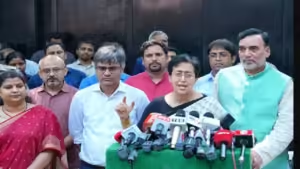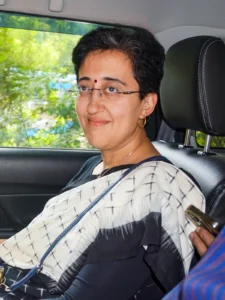Atishi’s elevation to this prestigious post reflects her long-standing dedication to public servicIntroduction
Atishi Marlena Singh, selected as the third woman and the youngest chief minister of Delhi. Her appointment is a historical move in the politics of the capital and it is an indication of the incremental inclusion of women and youth in the politics of India. Atishi’s elevation to this prestigious post reflects her long-standing dedication to public service.
Atishi’s Political Journey
Atishi’s passion for education and governance is something that has characterized her political career. She has played a significant role to change the public education system in Delhi. She assisted Deputy Chief Minister Manish Sisodia to make government school as competitive as private schools. Atishi’s strategies included infrastructure development, training of teachers, and innovation which greatly enhanced learning achievements in Delhi.
Several accomplishments in the area of education or in educational management made her catering as a competent and innovative manager. It also laid down a foundation for her to occupy senior positions within the AAP; therefore, she became the Chief Minister. The majority of the population appreciates her plan on free education and social services and more so the parents and teachers who have been Herson beneficiaries.

Delhi’s Third Woman Chief Minister
Atishi, became Delhi’s third female Chief Minister and the youngest in the entire history of the Indian subcontinent. The last two women Chief Ministers, Sushma Swaraj and Sheila Dikshit were contributed a lot to their parties. Atishi now joins this esteemed list, and her leadership style, proactive with a focus on activism and policy, is expected to make her distinct. Delhi can certainly benefit from Atishi’s fresh view and unique management style in terms of new thinking in its governance. In addition, Atishi introduces more progressive views on life in the capital. This appointment is a clear indication that the AAP is keen on young, dynamic leadership fully aware of the demography that is emerging in the city.
Atishi’s vision of the future does resonate with the expectations of the younger generation. She is capable of applying technology and core features of modern governance to solve the problems like pollution, housing, and transport. Her leadership signifies a pursuit of progressive change for the Delhi with commitment towards building a people friendly, creative and progressive city for one and all.

Conclusion
Atishi as the youngest and third female Chief Minister of Delhi marks an important place in Indian politics. Her accomplishments in education and governance will help transform the city. Atishi’s new position gives her a wider scope to make a difference as her policies are very progressive and along with the energy that comes with youth and the passion to serve the public. People will be observing her leadership since she will be too inspiring young women of the future generation in politics.



